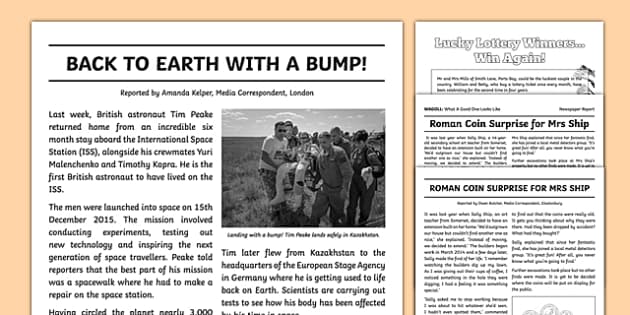Things about News Articles
News Articles - An Overview
Table of ContentsMore About News ArticlesHow News Articles can Save You Time, Stress, and Money.Some Known Facts About News Articles.Facts About News Articles UncoveredNot known Facts About News Articles
Good expertise of different topics provides pupils an one-upmanship over their peers. Also though electronic and social media are easily available, we should not neglect exactly how vital it is to check out the papers. Parents must try and inculcate the habit of checking out a paper as an everyday routine to continue the heritage of the adored print medium.News stories also have at the very least one of the complying with crucial features family member to the desired audience: closeness, prominence, timeliness, human interest, anomaly, or effect.
Within these limitations, information tales also aim to be detailed. Various other aspects are entailed, some stylistic and some obtained from the media type. Among the larger and much more recognized newspapers, justness and equilibrium is a major aspect in providing info. Commentary is typically restricted to a separate section, though each paper may have a different total angle.
Papers with a global audience, for example, tend to make use of a much more formal style of composing. News Articles.; usual design guides include the and the United States News Design Book.
Some Of News Articles
As a rule, reporters will not make use of a long word when a short one will certainly do. News writers attempt to prevent utilizing the very same word more than once in a paragraph (occasionally called an "resemble" or "word mirror").
Headlines sometimes omit the topic (e.g., "Jumps From Watercraft, Catches in Wheel") or verb (e.g., "Pet cat lady fortunate"). A subhead (likewise subhed, sub-headline, subheading, subtitle, deck or dek) can be either a subordinate title under the main heading, or the heading of a subsection of the article. It is a heading that comes before the primary text, or a group of paragraphs of the primary text.

of a post topic, source, or interviewee), it is referred to as a pulled quote or pull quote. Extra signboards of any of these kinds might show up later in the write-up (particularly on succeeding web pages) to entice additional analysis. Journalistic internet sites sometimes utilize computer animation techniques to exchange one billboard for one more (e.g.
How News Articles can Save You Time, Stress, and Money.
Such signboards are additionally made use of as tips to the article in other sections of the publication or site, or as promotions for the item in other publication or websites. News release of the Swiss federal government. Normal structure with title, lead paragraph (summary in vibrant), other paragraphs (information) and get in touch with information.

Example of a hard-lead paragraph NASA is recommending one more space job. The spending plan requests about $10 billion for the task.
An "off-lead" is the 2nd most important front page information of the day. To "bury the lead" is to begin the write-up with history info or information of secondary significance to the visitors, requiring them to review even more deeply into a post redirected here than they need to have to in order to find the necessary points.
Examine This Report on News Articles
Typical use is that or 2 sentences click resources each form their own paragraph. Reporters generally describe the organization or structure of a newspaper article as an inverted pyramid. The crucial and most interesting components of a story are put at the beginning, with sustaining information adhering to in order of lessening relevance.
It enables people to check out a topic to only the deepness that their curiosity takes them, and without the charge of details or nuances that they could think about pointless, yet still making that info offered to more interested readers. The inverted pyramid framework additionally enables short articles to be cut to any type of approximate length during layout, to suit the room offered.
Some authors begin their tales with the "1-2-3 lead", yet there are lots of kinds of lead available. A twist can refer to several points: The last tale in the news program; a "delighted" tale to finish the program.
Longer short articles, such as magazine cover write-ups and the items that lead the inside areas of a newspaper, are referred to as. Attribute stories vary from straight news in several ways. Foremost is the absence of a straight-news lead, the majority of the time. Instead of supplying the essence of a tale in advance, function writers might try to tempt visitors in.
Little Known Facts About News Articles.
The reporter often details interactions with meeting topics, making the piece extra individual. An attribute's initial paragraphs usually relate an interesting minute or occasion, as in an "anecdotal lead". From the particulars of a person or episode, its view quickly broadens to abstract principles concerning the tale's subject. The area that signals what a feature is around is called the or billboard.

The Editor's Tool kit: A Recommendation Overview for Beginners and Professionals (2001) Allan M. Siegal Check This Out and William G. Connolly. The New York City Times Handbook of Style and Usage: The Official Design Overview Used by the Writers and Editors of the World's Most Authoritative Paper (2002) M. L. Stein, Susan Paterno, and R.